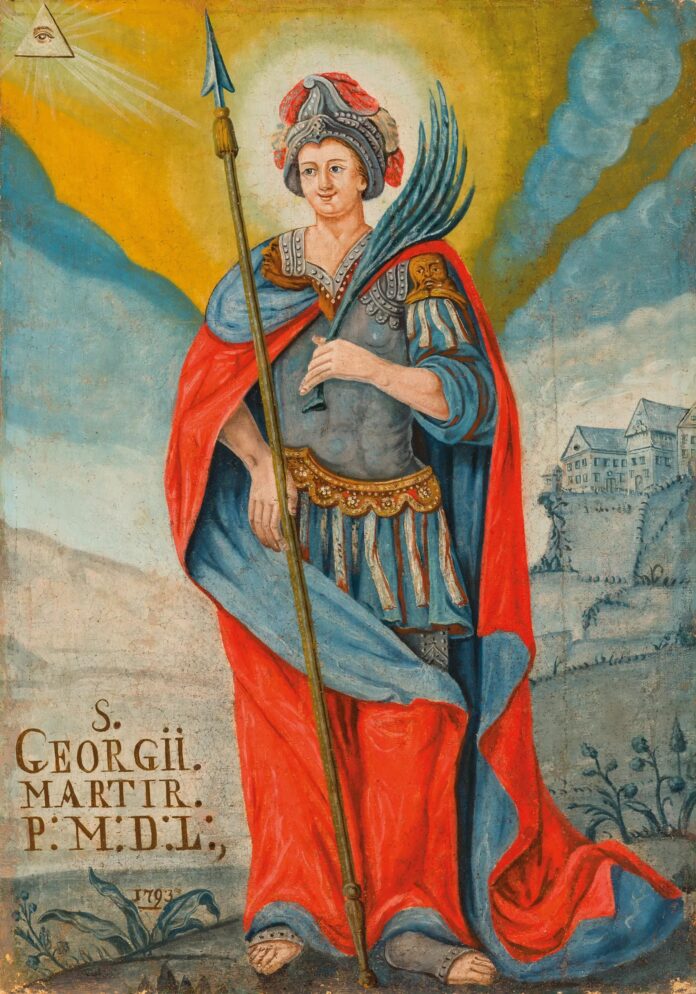
The website bernardinai.lt recently published an interesting article about St. George and his popularity in Lithuania. Ethnologist Libertas Klimka offered an historical overview. The cult of St. George became widespread during the Crusades, and then took hold in the Lithuanian agricultural community. From patron saint of knights, St. George became the patron saint of farmers. Even today sculptures in his image are present in remote chapel-crosses.
St. George was at the centre of a legend told by the Catholic Bishop of Samogitia (Žemaitija), a historian and one of the best known Lithuanian writers of the 19th century. A farmer who prayed to St. George because his steer fell ill. If it died, he would not be able to sell it and buy food for his family. The steer miraculously recovered, and the family was saved from starvation.
St. George was reputedly a warrior who lived in the 3rd century, an avid Christian who was imprisoned, tortured and finally killed for his beliefs.
Various superstitious behaviours were practiced on St. George’s day, called “Jurginės”. On that day, farmers had to take their livestock out to pasture. Rituals to ensure their health and protect them from wolves throughout the grazing season included placing coloured eggs (jurgučiai) on the threshold of the barn together with a saw. Farmers would walk around their herd carrying a lock to ensure the animals’ safe return to the barn at the end of the season. The lock would then be placed on the threshold. A farm wife would smudge the cows to prevent them from snake-bites and wolf attacks.
The celebration of Jurgines wastotally focused on the livestock; no work could be done, and no soil moved, so no ploughing or hammering of stakes was allowed. In addition, nothing could be lent out.
A wisp of hair would be cut from each animal’s head and burned, and the shepherd boys would gather as many stones as there were animals to put by the threshold of the barn so they would find their way back home. A cross was painted on the barn door to keep evil spirits out.
Horses were bathed and groomed on St. George’s day, and allowed to rest, except for a trip to church or to market.
On St. George’s Day in the diaspora, Lithuanian Scout troops hold special meetings. In Lithuania the day is also celebrated by Scouts as a spring festival.






























